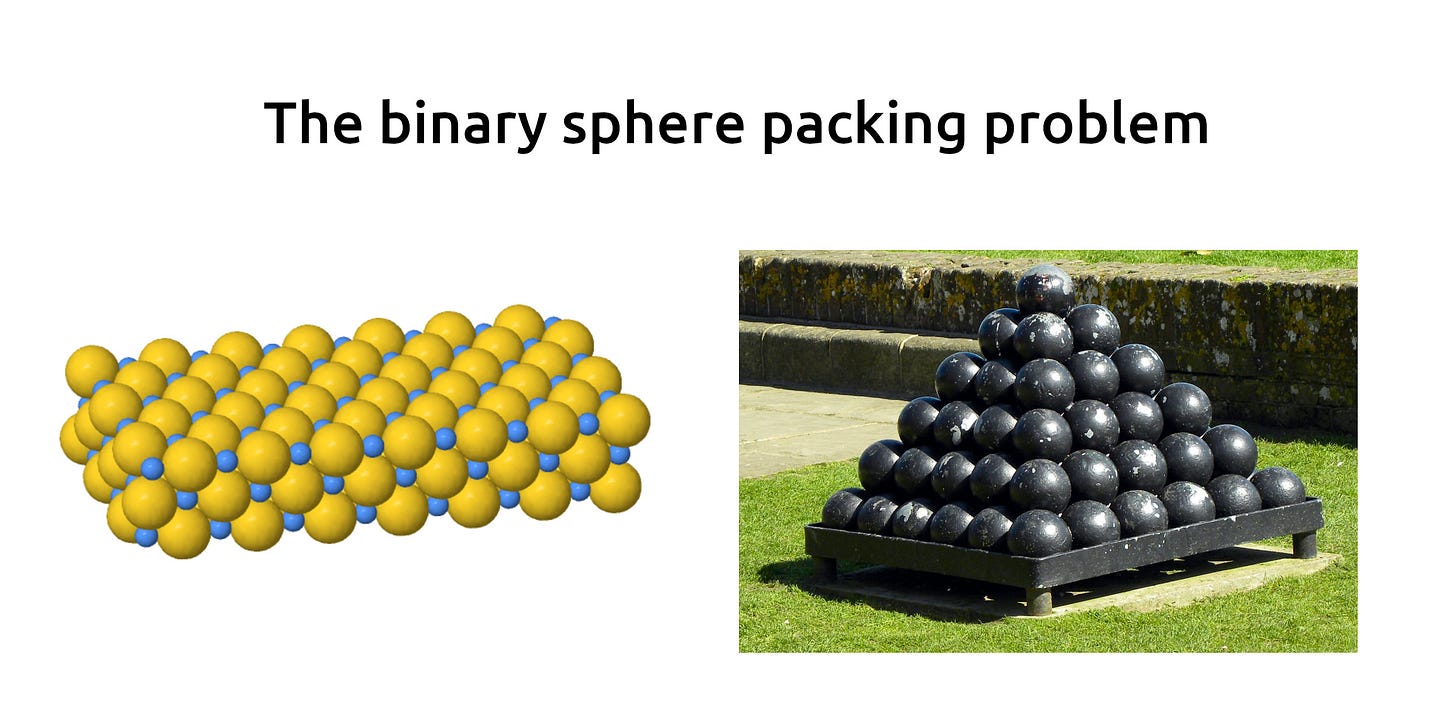The binary sphere packing problem
What is the densest way to fill space with spheres of the same size? Is there a way to do it that is denser than the obvious regular way to stack cannonballs on a square base, as shown in the picture above? According to the Kepler conjecture, posed by the mathematician and astronomer Johannes Kepler in 1611, the answer is “no”. The Kepler conjecture was…
Keep reading with a 7-day free trial
Subscribe to A Piece of the Pi: mathematics explained to keep reading this post and get 7 days of free access to the full post archives.


